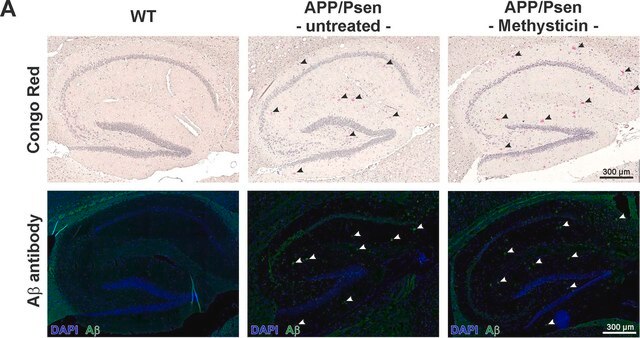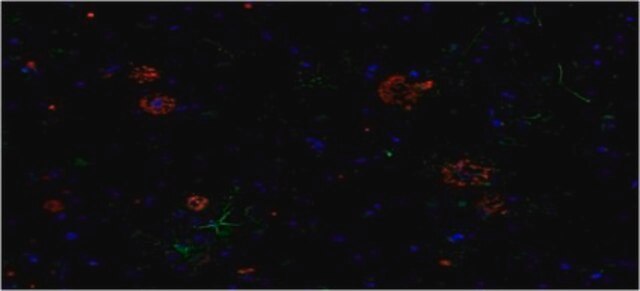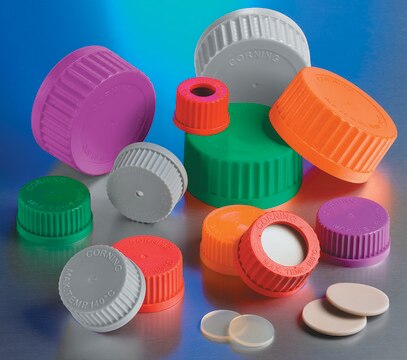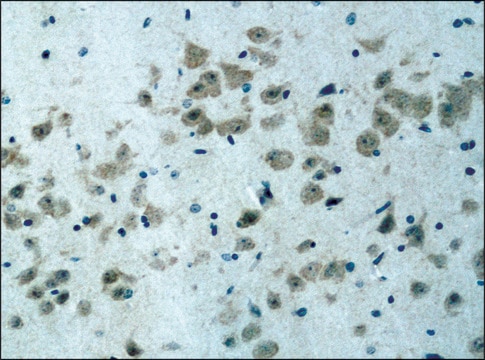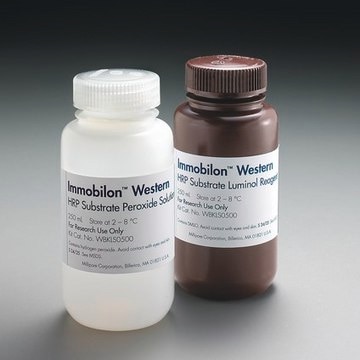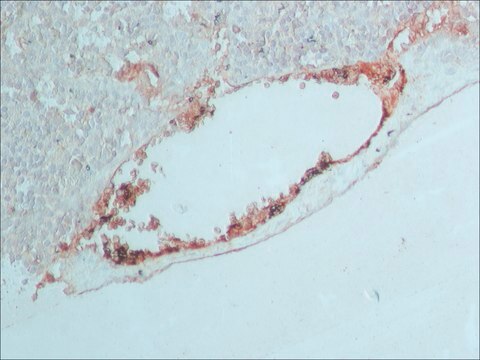ABC974
Anti-ATG8 Antibody
from rabbit, purified by affinity chromatography
Synonym(s):
Atg8, Atg8a, Atg8b, Autophagy-specific gene 8a, Autophagy-specific gene 8b
About This Item
Recommended Products
biological source
rabbit
antibody form
affinity isolated antibody
antibody product type
primary antibodies
clone
polyclonal
purified by
affinity chromatography
species reactivity
Drosophila
species reactivity (predicted by homology)
Caenorhabditis elegans (based on 100% sequence homology)
technique(s)
western blot: suitable
shipped in
wet ice
target post-translational modification
unmodified
Gene Information
fruit fly ... Atg8A(32001)
General description
Specificity
Immunogen
Application
Apoptosis & Cancer
Apoptosis - Additional
Western Blotting Analysis: A representative lot detected sdRNA-targeted downregulation of Atg8a and Atg8b in Drosophila S2 cells (Shelly, S., et al. (2009). Immunity. 30(4):588-598).
Western Blotting Analysis: A representative lot detected the 16 kDa Atg8-I band (unlipidated) as well as the serum starvation- and vesicular stomatitis virus (VSV) infection-induced 14 kDa Atg8-II band (lipidated) in Drosophila S2 cells (Shelly, S., et al. (2009). Immunity. 30(4):588-598).
Quality
Western Blotting Analysis: 0.5 µg/mL of this antibody detected ATG8 in 10 µg of DL1 cell lysate.
Target description
Physical form
Storage and Stability
Other Notes
Disclaimer
Not finding the right product?
Try our Product Selector Tool.
recommended
wgk_germany
WGK 2
flash_point_f
Not applicable
flash_point_c
Not applicable
Certificates of Analysis (COA)
Search for Certificates of Analysis (COA) by entering the products Lot/Batch Number. Lot and Batch Numbers can be found on a product’s label following the words ‘Lot’ or ‘Batch’.
Already Own This Product?
Find documentation for the products that you have recently purchased in the Document Library.
Our team of scientists has experience in all areas of research including Life Science, Material Science, Chemical Synthesis, Chromatography, Analytical and many others.
Contact Technical Service
